Interior Design Solutions that will Enhance your Life
It’s all too easy to get stuck in a design rut when it comes to your home. However, with a little creative thinking, it’s possible to revamp your property. The following simple but effective design tips could help you to improve your house and they might even enhance your life.
Window dressings that put you in control
If you assume window dressings are just there to look pretty and give you some added privacy, think again. By choosing these home accessories carefully, you can bring added comfort to your rooms. For example, it’s now possible to purchase stylish and highly practical blockout blinds and curtains. Available from window dressing specialists like Curtainworld, these accessories give you complete control over light levels in your home. Whether you want total darkness to help you sink into peaceful slumber or you’re keen to create the movie-theatre experience in your lounge, these blinds and curtains can help.
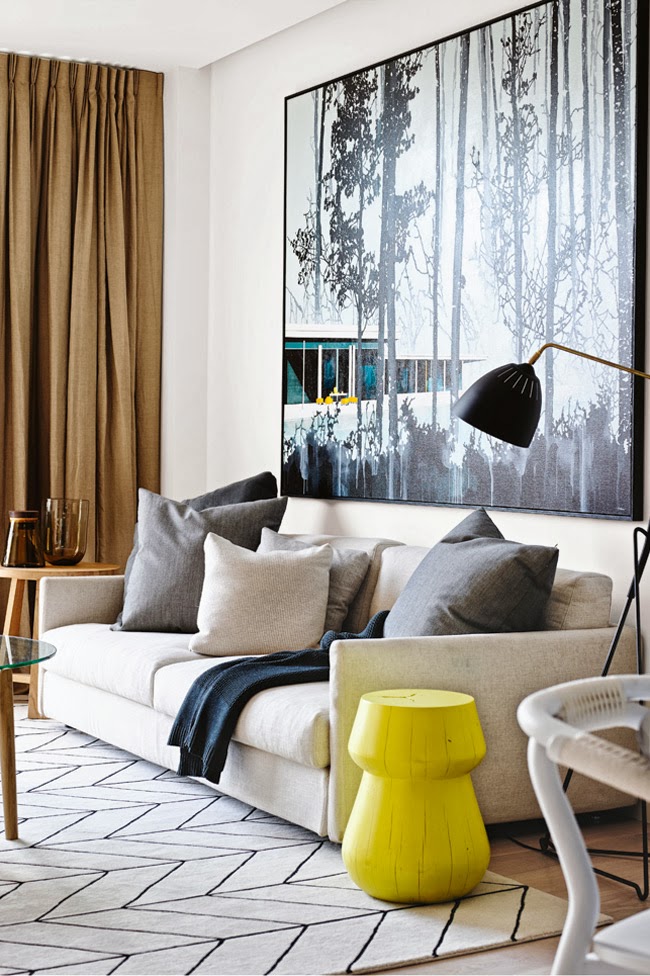
{Chambers Street Residence in South Yarra, Melbourne by MIM Design}
Soft furnishings that exude style and bring added comfort
Another quick and easy way to refresh the look and feel of your property is to add some new soft furnishings. While a simple rug and a few cushions may not seem much when you consider them on their own, when you adorn your rooms with an array of lavish new accessories, they can have a transformative impact. Thick pile rugs for your floors, soft throws for your seats and a scattering of stylish cushions on your couch and bed can really bring your rooms to life.
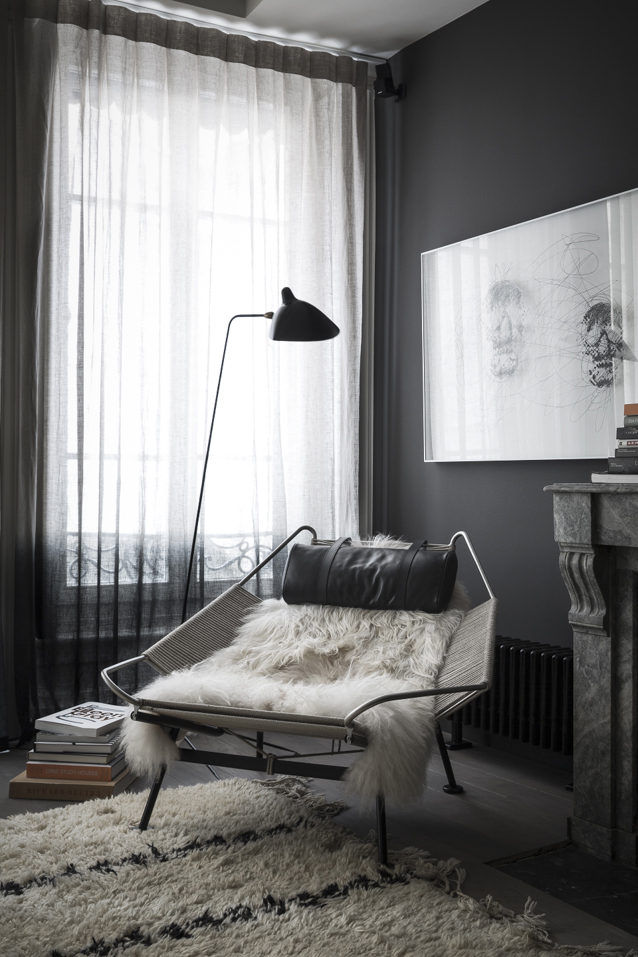
{I'd love to cosy up in this place right now! Appartement Lyon 5 By Maison HAND in Elle Decoration. Photo by Romain Ricard}
Bring the outside in
Another simple and satisfying way to enhance your home is to bring the outside in. Most people have at least a scattering of small pot plants in their properties, but why not take this a step further and introduce big, bold plants that make a real style statement? From the Zanzibar gem to the golden cane palm and Madagascar dragon tree, there’s certainly no shortage of options to choose from. This greenery can be used to liven up otherwise bare corners, soften stark walls and generally add a jungle look to your rooms.
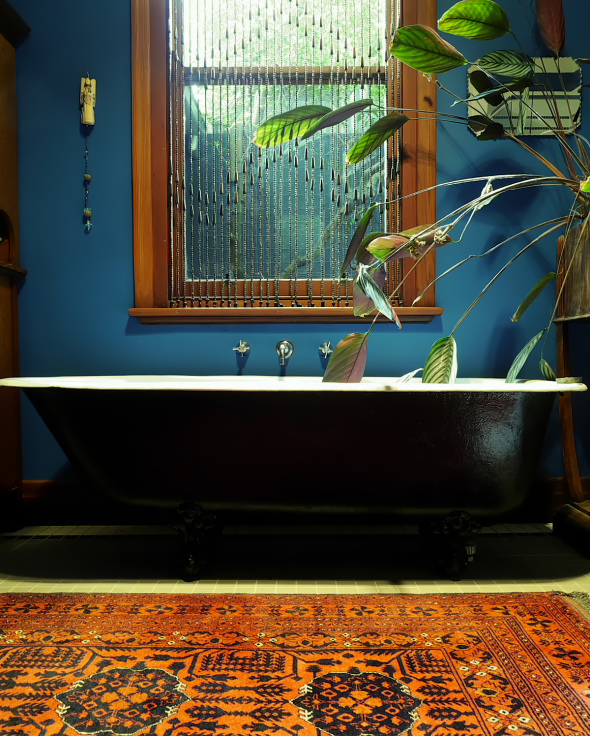
{Jazmina's beautiful Melbourne bathroom featured in The Room Illuminated}
As well as improving the appearance of your home, plants may help to boost your health. According to research conducted by Professor Margaret Burchett and Dr Fraser Torpy from the University of Technology Sydney, indoor greenery can remove pollutants, cleanse stale air and reduce symptoms such as sore eyes and headaches. The scientists also suggest that plants can help to minimise feelings of stress and fatigue. The best thing is, you don’t have to splash much cash to get your hands on these home accessories and, as long as you care for them properly, they’ll give you many years of enjoyment.
I hope you all enjoyed these few tips from our contributor Gail Newland. I personally love seeing plants of all sizes inside. Thanks Gail!
Do you have any tips of your own to share?
xo Romona![]()
Good Kitchen Design: How to make the most of your space
Your kitchen should be designed to work in sync with your lifestyle, yet too often it is the opposite way around. As home design continues to revolutionise itself the modern kitchen is a world away from its past incarnations. Previously seen as a room of preparation and storage, the modern kitchen is open, inviting and acts as the epicentre of the home, truly the heart of the modern family unit. This rise in status has resulted in an increased desire for a kitchen that reflects upon the household, effective and efficient. Check out these newest kitchen design rules to mould your own classic, modern kitchen.
Establish your Design Reasoning
The first and most important design rule is to decide what motivation you have for your kitchen. This can be divided into three broad categories; Functionality - If your kitchen has inadequate bench, storage or stove space you may be inclined to re-design. Style - If you're looking to update your kitchen with modern cabinetry, appliances or colour schemes. Value - If you're looking to add additional value to your home for re-sale value. Without establishing your design motivation you'll end up with a scattered and poorly functional kitchen.
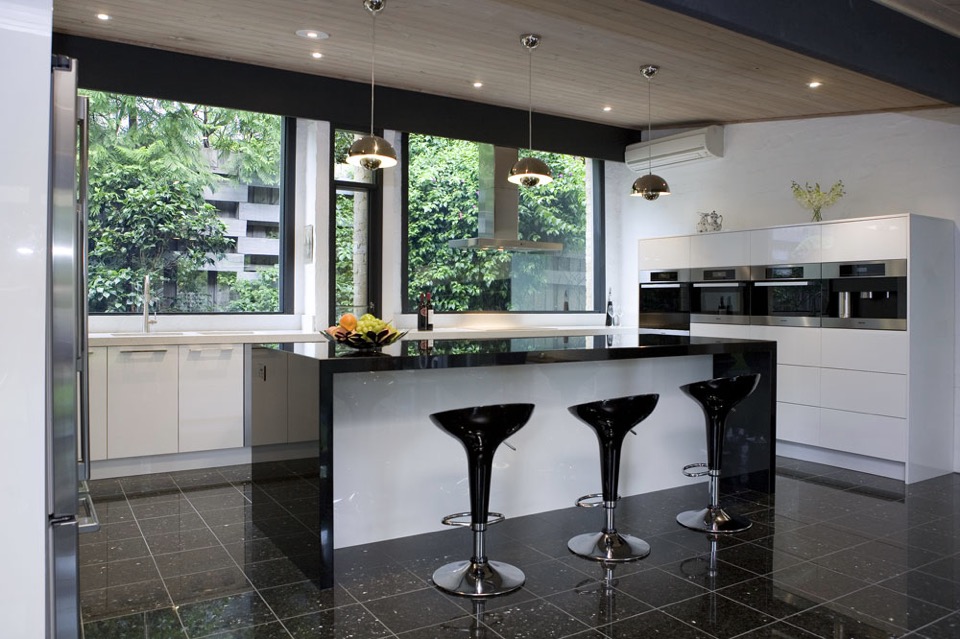
Start with the Kitchen Triangle
The Kitchen Triangle, or 'work triangle' as defined by the National Kitchen and Bath association, is an imaginary line drawn between the three vital work stations of your kitchen. The sink, oven top and fridge. You should be able to easily transition to each centre without the space being cluttered or too far apart (not more than three metres between each point).
Aesthetics
If the Kitchen Triangle is a symbol of an efficient kitchen, your surfaces, cabinetry and appliances will represent the style. Try to maintain streamlined surfaces, cabinets should reach the ceiling or run flush with a bulkhead. This limits wasted space which impairs your design with inefficiency, as well as preventing a recess for catching dust. Consider integrating appliances within the design through the use of integrated front panels. This technique can blend a dishwasher into the overall style of your kitchen seamlessly.
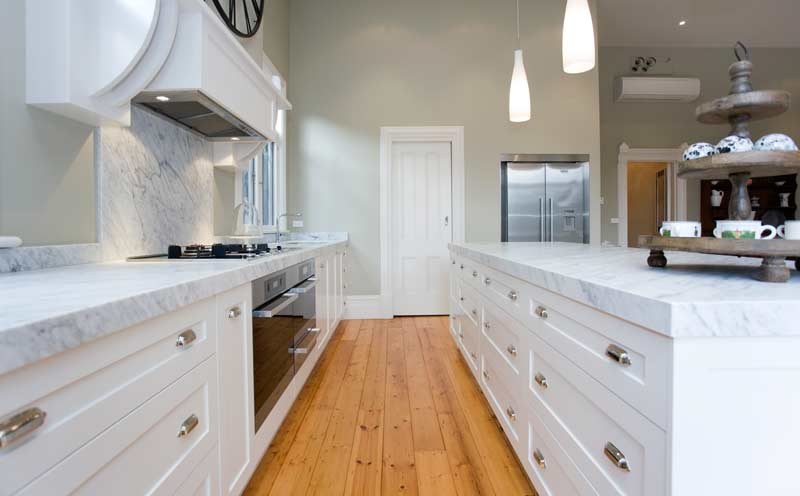
Lighting and Colour
Lighting and colour are also key components of strong kitchen design. Be aware that colours may dictate mood in certain homes. Neutral palates are thought to create calm while using bright, bold colours on splashbacks can create a more direct aesthetic. When it comes to lighting, consider using energy efficient LED’s or compact fluorescents in work spaces. Adding dimming switches or floor lights can also be used to create mood and atmosphere at your discretion.
Designing your ultimate kitchen, a room which is both effective and efficient while retaining a warmth, joy and connection, is a massive undertaking. As the centre of your families health and wellbeing there are a range of factors from design, to mathematical and aesthetic, which will dictate your finished product. Consider the needs of your family and your home and with these hints and tips you’ve taken the first step towards your perfect, designer kitchen.
I hope you found these kitchen design tips useful. Let me know what you think ![]()
xo Romona
* All images from The Kitchen Place.![]()
Follow my blog with Bloglovin
A beginner’s guide to illuminating your home
All too often, lighting is seen as merely an interior design afterthought. However, with a little creative thinking, lights can dramatically enhance the look of homes. If you’re new to property design and you want to make the very most of the illuminations now available, take a look at these simple but effective suggestions.
Maximise natural light
Firstly, bear in mind that it’s not just artificial lights that can help to boost the appeal of your property. Sunlight can also play a major role in this. By allowing solar rays to stream into your rooms, you can give them a more spacious, airy and open feel. With this in mind, it’s important to select suitable window dressings. One great way to ensure you make the most of the natural light on offer is to take advantage of the sunscreen roller blinds available from window furnishing specialists like The Blinds Company. These products filter natural light to keep rooms bright while also reducing heat and glare, and stopping harmful UV rays from entering your home.
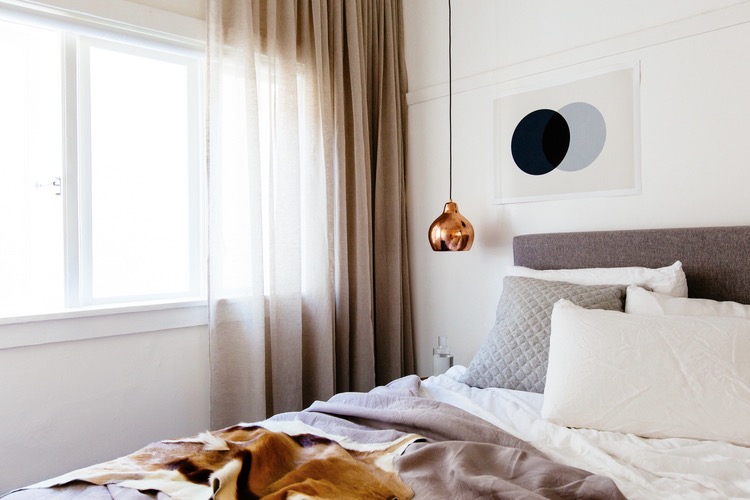
{Full height sheer curtains provide light, texture and interest to this bedroom space in Bondi by C+M Studio. Photography by Caroline McCredie}
How Hardwood Flooring Has Changed
Hardwood flooring has changed profoundly in recent years. These changes in floorboard technology, colour and texture mean that hardwood can fit a greater number of interiors than ever before. Here’s our visual recap to the latest trends in hardwood flooring.
Sustainable Sourcing
Individuals are often concerned that their decision to fit natural hardwood will lead to the demise of natural habitat. In truth, thanks to organisation such as the FSC (FSC Forest Stewardship Council), hardwoods from trusted vendors are sourced from sustainable forests where trees are consumed based on a rigorous and controlled quota and new trees are planted instead. This process is called managed sourcing. Your vendor of choice will be able to share the origin of the hardwood.
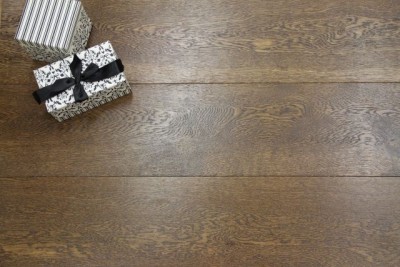
{Solid Hardwood Flooring}
Lamp revamp
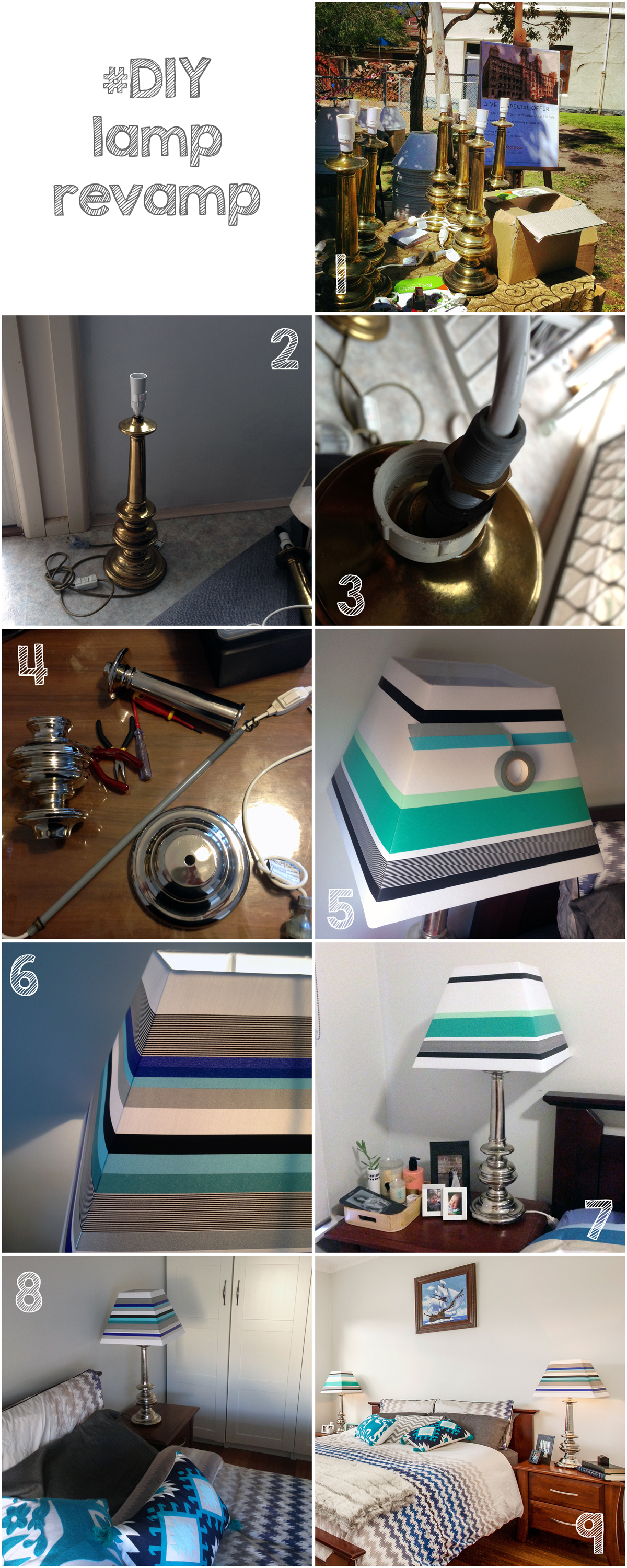
Home Open
Before I get too soppy, the main reasons for this post were to give you some cheap update ideas for your home, a few tips for simple styling for sale and giving you a sneaky-peak into our lives and home. Enjoy.
Here are some simple tips for refreshing your home before sale:
1. Keep colours neutral.
You may love neon pink or cobalt blue but not everyone will - and not everyone has the imagination to see past it if they don’t like it. You don’t have to avoid colour, just stick to colour in flowers, soft furnishings and artwork.
2. Keep spaces bright.
I do love a good moody Abigail Ahern or Kelly Wearstler room, but I think this belongs in a space that you are going to inhabit for the long term. If you want to maximise the range of interest, keep it light, bright and airy. Lighting at many different levels adds interest - think combinations of candles, table lamps, floor lamps, overheads, wall sconces or whatever you have at your disposal.
3. Fresh flowers and plants (or even good fakes ones) are a must.
They bring colour, style and life (or appearance of life if faux) to your space, not to mention fragrance. Just don’t let the fragrance be too overpowering - air out spaces, keep water fresh and replace flowers if they start to get a bit droopy or pongy.
4. Decluttering is a given really.
Noone want to buy the house of a hoarder, who knows what else you might find after purchase. Pair back your living spaces and tidy display areas. That doesn’t mean depersonalise or make it impossible to live, but presenting the space how people would like to live (i.e. neat, organised, stylish) sells a lifestyle not just a house.
Feel free to disagree as every house has it’s own personality. Below are a few before and after’s of our own house to give you some ideas.

{In the master bedroom, all the curtains were removed from the house to bring more light into the spaces and reduce some of the heaviness of the rooms. Both block out blinds and sunshaders are in the bedrooms while just blockouts are in the living spaces. The walls are a pale grey, Nippon Nighthawk 1, and the ceiling light was replaced by a fan and light for much more comfortable summer sleeps. Adding a rug, cushions and throws for softness as well as customising my lamp shades makes it a bit more personal. Spaces can still have personality while being clutter free - just choose a few key pieces like books and photo frames to make the space feel lived in and not like a showroom}
A Spot of Paint
The only problem I’ve found with this is the high VOC levels, a staggering 105g/L compared to low-VOC ceiling white paints that have around 5g/L.
Since a friend asked the other day, and I realised that not everyone has a background in Architecture and Sustainability, I thought I’d share a few simple tips for paint selection. The type, that is, not the colour - thats waaay too personal and subjective and depends on soooo many factors.
Its handy to know what to ask for when you get to the paint counter. Here are a few things to look out for:
Low or No VOC (Volatile Organic Compounds). I am astounded that this is not standard by now and you have to specifically look for it, but fortunately it is getting a lot easier to find. Apart from these products reducing your greenhouse footprint, they also provide instant benefits to you and your family, for example a decrease in asthmatic reactions and allergic sensitisation through less off-gassing, that nasty paint smell.
No Formaldehyde - yes that stinky stuff that they preserve bodies with (at least they did during my former life in the medical field, but have hopefully ceased using now) and is carcinogenic as well as thought to cause allergies, headaches and numerous other health issues. This can also be found in adhesives, particleboard (like MDF), linoleum, disinfectants, and some nail polishes - eek! Best avoided.
Here are some to keep your eyes open for:
* Any Dulux paint with the Eco Choice symbol on the label is low-VOC. This includes most of their Wash & Wear wall paints, EnvirO2 and ceiling white.
* Taubmans Pure Performance with Microban is a low-VOC, mould resistant Acrylic.
* Porter's zero VOC or low VOC paints
* ecolour’s entire range
* Resene’s Environmental Choice approved paints
* Wattyl interior design i.d Paint System using Ecotint for colouring.
When in doubt, check out Ecospecifier for more responsible product selection. Greenpainters also have this (a bit long) vid that explains low VOC paints, if you want to know more.
A few cool bits of paint tech and terminology I can’t resist throwing in there:
* Thermochromic paint - Changes colour with the temperature. I think I could have endless fun pressing up against the wall like a hyper colour t-shirt.
* CoolColour - reduced Total Solar Reflectance (TSR), that is, the colours work by reflecting energy in the near and far infra red region of the spectrum even though they absorb strongly in the visible region. Put simply, dark colours reflect more light than normal but look the same, so you don’t have to stick to white for most reflectance.
* SolarPaintTM - a solar paint that may be printed onto plastic, integrated into tinted windows and other building materials, making the whole structure itself a source of power. How awesome!
And I realise I said I wouldn’t touch colours, but in honour of Christmas and the end of the year, why not have a bit of fun and paint Pantone’s colour of the year for 2013, Emerald 17-5641, somewhere in your house.
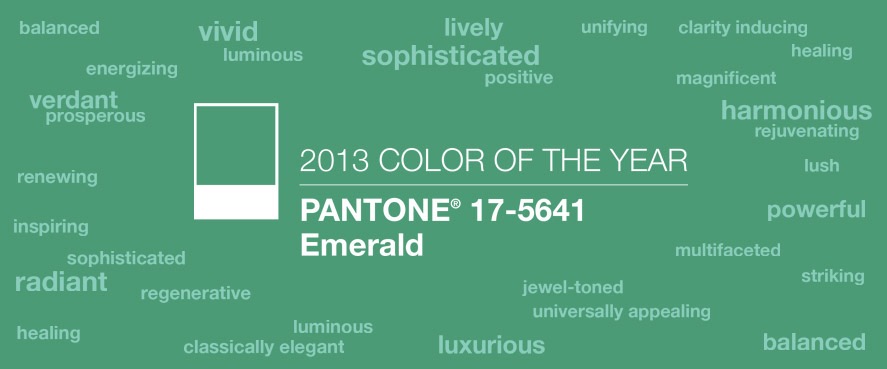
We are on break for a bit, so this will be my last post until the new year. Merry Christmas, Happy New Year, and all the other reasons in the world to celebrate with family and loved ones.
Cheers and Go nuts!
xo Romona
![]()








